In the sound system, the frequency divider is an important part for the normal and effective operation of the speaker. Because the electric speaker increases its sound power, due to its structural characteristics, its frequency coverage is narrowed, in order to reach the full frequency band. High-power sound reproduction, it is necessary to make speakers in different frequency bands, and then combine them to make sound. The frequency division is to divide the signal into two or more frequency bands, which can make various speakers in the speaker system work in the optimal frequency range. Inside, thereby improving the working efficiency of the power amplifier, reducing the frequency distortion of the speaker, achieving the purpose of high-fidelity playback of the sound signal, according to the signal frequency band, according to the output signal frequency band can be divided into two, three and four points Frequency, the circuit or audio device used to implement the frequency division task is called a frequency divider. According to the position of the frequency divider, it can be divided into two types: power divider and electronic frequency divider. This article first introduces why the electronic frequency divider is used, and then explains the working principle, function and characteristics of the electronic frequency divider. Finally, the adjustment method, precautions and development trends of the electronic crossover are introduced.

Our sound engineers study the electroacoustic and the continuous development of electro-acoustic equipment and technology for one purpose: to reproduce all kinds of sound sources as faithfully as possible, of course, to make full use of the current electricity in the strange and diverse sounds of nature. The reproduction of sound technology is almost impossible to do. As we all know, the frequency range of the sound is between 20Hz and 20000Hz. Now the frequency range of most preamp audio processing equipment can reach such a width, but the current speaker has become a bottleneck. We want to use one or A simple speaker can deliver a wide frequency of sounds close to 20 Hz - 20,000 Hz, which is difficult to achieve because the effective operating frequency range of a single speaker is not very wide. In view of this, the electro-acoustic engineers have designed speakers that work in different frequency ranges, such as:
1. Subwoofer: Let it work in the frequency range of about 30-200Hz.
2. Low-midrange speaker: Let it work in the frequency range of about 200-2000Hz.
3. Tweeter: Let it work in the frequency range of about 2000-20000Hz.
In this way, we can use a different type of speaker working in different frequency segments to configure a sound system that can maximize the sound frequency (20Hz--20000Hz). Of course, the composition and parameters of different speaker devices are different. I mentioned above as a three-way system. In actual use, there are other systems such as 2-way or 4-way, and different audio systems. Because the speakers used will be different, the operating frequency of these speakers may not be the same, but the general principles and ideas are the same.
So one question is: How do we flexibly assign audio frequencies to these different types of speakers that work in different frequency bands? In order to solve this problem, an electronic crossover has emerged, which can provide a suitable frequency segment according to the needs of different speaker operating frequencies, such as:
1. We can use an electronic crossover to send high frequency signals through the amplifier to the tweeter.
2. The intermediate frequency signal can be sent to the midrange speaker through the power amplifier using an electronic crossover.
3. The low frequency signal can be sent to the woofer through the power amplifier using an electronic crossover.
Such high, medium and low frequency signals are independently outputted and do not interfere with each other, so that the working frequency advantages of different speakers can be exerted as much as possible, so that the sound reproduction of each frequency band in the sound system is more balanced, so that the sound is more layered and the sound is more perfect. That's why we use the electronic crossover.
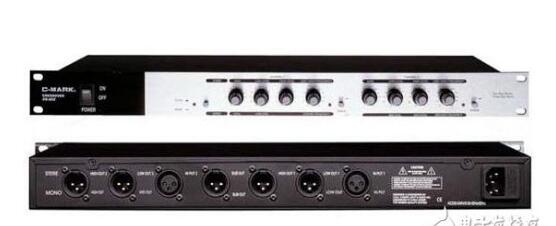
The electronic frequency divider uses various active filters (high-pass, low-pass, band-pass) to divide the full-frequency audio signal into different frequency bands. The active filter is connected by a passive RC filter network and an operational amplifier. The follower consists of an attenuation characteristic that increases with increasing RC order (the attenuation slope increases by -6 db/out for each additional order).
The electronic crossover method allows only the power transmission line between the power amplifier and the speaker. There is no other link that affects the sound quality, which reduces the distortion and improves the damping coefficient of the power amplifier to the speaker. Since the load of the electronic crossover is the input of the power amplifier, the impedance is high and stable, so the frequency dividing point can be easily adjusted. And control the frequency division accuracy, and because the bandwidth of each band of the electronic frequency divider is narrow, the higher harmonics caused by the nonlinear distortion are suppressed, the total harmonic distortion and the intermodulation distortion are reduced, and the electronic frequency divider overcomes The disadvantages of the power divider are added, but the cost and the difficulty of system debugging are increased, so it is often used in professional situations.
1. Working principle diagram of two-way electronic crossover
7-32 shows the block diagram of the two-way electronic frequency divider using the filter operation synthesis method. The basic principle is to filter the signal of the corresponding frequency band with a set of high-pass or low-pass filters, and then invert the signal, and The full-screen input signals are added to obtain a signal from another frequency band.
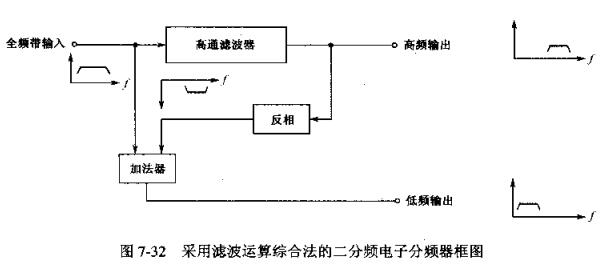
2. How does the three-way electronic crossover work?
The three-way circuit uses a filtering operation synthesis method. On the basis of the two-way circuit, the intermediate frequency output signal can be obtained by simply inverting the signals output by the high-pass and low-pass filters and adding them to the full-band signal.
Figure 7-33 shows a block diagram of a three-band electronic crossover using direct filtering. The working principle is to input the full-frequency signals into the high-pass, band-pass, and low-pass filters respectively to obtain the corresponding high, medium, and low-frequency signals.
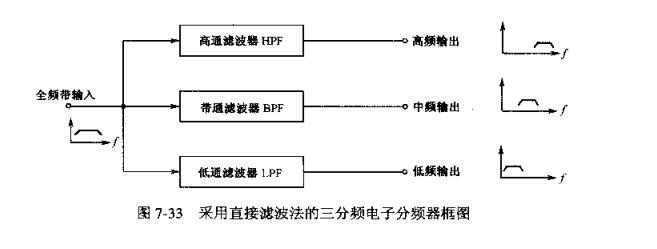
1, the basic frequency division task
Because there are many types of speakers, what kind of sinister and multi-frequency electronic crossovers should be used in the system, and the electronic frequency dividers are usually divided by 2, 3, and 4 Equally divided, over 4 is too complicated and meaningless. Of course, the current electro-acoustic technology is changing with each passing day. At present, there are some crossovers that can perform some other processing on the audio signal while dividing the frequency, but the main function and task of the electronic crossover are of course divided.
2, protect the speaker equipment
We know that the operating frequency of different speakers is different. Generally speaking, the larger the diameter of the speaker, the better the low frequency characteristics and the lower the frequency dive. It is as if the bass effect of the 18-inch speaker is generally better than that of the 15-inch speaker in the same situation; instead, the mid-range part will use a smaller-caliber speaker, because the current paper cone vibrating speaker caliber The smaller the sound, the higher the frequency of the sound; the diaphragm of the high-pitched part should also be small to emit a high-frequency sound. Since speakers are so complex and so diverse, it's important to ensure that they work safely and efficiently. The electronic crossover provides the optimum operating frequency for each of the different speakers, making the various speakers more reasonable and safer to work. Imagine: If the mid-high-pitched speakers in the system are not divided by the electronic crossover, but directly use the full-band audio signal, then these high-pitched speakers will be easily damaged under the impact of low-frequency signals. In addition to the crossover task, the more important functions of the normal use are: protection of the speaker device.
3, increase the layering of the sound
If there are many different types of speakers in an audio system, there is no electronic crossover. Different types of speakers use undivided full-range signals. There will be many frequency superposition and repetition between different speakers. In part, the sound interference will become very serious, the sound will become blurred, the sound field will be poor, and the microphone will easily produce acoustic feedback. If the electronic crossover is used to make a reasonable crossover, so that different speakers are in the best working condition, the sound frequency range between different speakers will be almost never repeated, thus reducing the interference of sound waves. The sound will become extraordinarily clear, and the sound will be better and more layered!
Electronic frequency divider adjustment method1. MASTER-LEVEL: It is very important to adjust the input level of the channel signal. Just like the adjustment of the channel gain of the mixer, the volume of the first step is very important. Generally, it is more suitable to adjust at a position similar to the 12 o'clock clock, and no major adjustment is needed.
2. LOW-LEVEL: The adjustment of the bass output volume should be determined according to the crossover point and the number of subwoofers in the system. Generally, it is adjusted at positions like 12 o'clock and 14 o'clock. Also pay attention to see if the LOW-MUTE bass volume mute button is pressed, otherwise there will be no bass signal sent out.
3. LOW-MUTE: The bass volume mute button. Press this button to turn off the volume of the LOW-LEVEL bass output. This is mainly to compare the effect of bass and treble, of course, do not press it in normal use.
4, LOW-DELAY: the adjustment of the bass delay knob should be used flexibly, according to the effect of the scene to adjust, sometimes the bass is too hard, too thin, we can turn it on, let the bass add a delay, which can increase the bass fusion Degree and fullness; on the contrary, if you feel that the bass is suitable, don't open it, otherwise the bass will appear turbid and muddy. Generally adjusted at positions like 8 o'clock and 11 o'clock.
5. LOW/HIGH-FREQUENCY: Crossover knob. Adjusting the crossover point of the electronic crossover should be based on the type and characteristics of the speakers used in the audio system. In the 2-way operation mode, it is usually adjusted within the range of 180Hz-250Hz. That is to adjust the position at 10 o'clock and 11 o'clock similar to the clock.
6. HIGH-LEVEL: The volume adjustment knob for the high-pitched output. The adjustment of the treble output volume is determined by the crossover point and the number of mid-range and high-pitched speakers in the system. Generally, it is adjusted at positions like 12 o'clock and 14 o'clock. At the same time, you should pay attention to the degree of fusion between the treble and the bass: the treble is too small to surround the sound, the sound will appear dim; the treble is too big, too prominent, it will appear out of line with the bass, not fusion. Moderate is good.
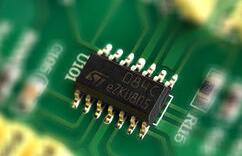
1. Crossover point: If you are in a 2-way audio system, the adjustment of the crossover point does not actually depend on the subwoofer, but on the mid-high range speaker. Because the subwoofer can work below 300Hz, but some mid-high-pitched speakers are too small, the dynamic range is not big enough, and must work above 200Hz to ensure their safety. If the crossover point is near 130Hz, then these The middle and high-pitched speakers work very dangerously.
2, the volume control: whether it is the input level or the output level, there must be a degree when adjusting, do not open too much. If the volume knobs on the electronic crossover are wide open and the sound pressure of the system is not enough, adjust the level of the signal in front of the electronic crossover or adjust the level and volume of the amplifier below the electronic crossover. Attenuation switch. This should be especially noted, otherwise the signal in the electronic crossover will be distorted and it will easily damage the lower level device.
3, there are some electronic crossovers on one: X10 button, everyone pay attention not to press it easily. For example, if our crossover point is adjusted at 200Hz, pressing this button 200 X 10 will become 2000Hz, so generally do not press this button unless it is needed.
4. Some electronic crossovers have a choice of bass mode on the rear panel. It can synthesize stereo 2 signals into 1 output, which can reduce the acoustic interference between the low speakers. Everyone can make appropriate use of it. Of course, if the bass crossover point is higher, then the sound from the subwoofer will have a certain directivity. At this time, it is better to work in the state of 2 stereo signals.
5, stereo working mode and mono working mode: Most of the electronic crossovers we use today are mostly divided by 2, considering the flexibility and versatility, the back panel of these electronic crossovers will generally A stereo and mono mode of operation switch, if this switch is placed in mono mode, then this electronic crossover becomes a two-channel 2-way electronic crossover A single channel 3-way electronic crossover. Therefore, do not easily switch this work switch unless necessary, otherwise the frequency signal output from the signal output port behind the electronic crossover will be very different! Lighter deteriorates sound quality, and heavy ones can damage equipment!
6, the output of the bass signal in the system and the output of the high-pitched signal must not be confused, otherwise the high-pitched signal is given to the subwoofer, the bass signal is given to the high-pitched speaker, so there is really no sound in the sound system of the South. Because the frequency is wrong! If you don't work well, you will burn out the speakers!
7. Is the main speaker cross-divided: It is said that the main speaker is going through the electronic crossover. Everyone should have their own opinions. If you don't understand, you can compare the test several times and decide, in the absence of the heart. Don't make decisions blindly.
8. When using a digital processor to divide the frequency, it must be clear which is the crossover point and which is the operating frequency range. In addition, there is a choice of frequency attenuation intensity at the starting point and ending point of the operating frequency range, such as 6dB, 12 dB, 24 dB, 48 dB, several options, we have to use it flexibly, generally at 24 dB is more suitable. .
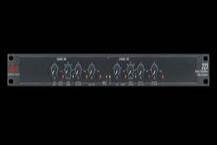
At present, the frequency divider we use is called an electronic crossover, but it is not digital. Its internal circuit is still analog, and the adjustment accuracy is not very accurate. In recent years, some digital processors have been newly released. These digital processors basically have a crossover function. At the same time, the crossover frequency is displayed in digital form. It is clear at a glance, and people can see and understand the accuracy of the crossover. The signal-to-noise ratio of the signal is greatly improved. More importantly, these digital crossover methods are different from the previous electronic crossovers. Let's compare the dbx 260 digital speaker processor as an example. If we need to build a four-way high-end audio system, on the 2 way. After the standard full audio signal is input to the dbx 260 digital speaker processor, we can divide it into four bands for different speakers:
1, the first channel of the dbx 260 digital speaker processor output signal is provided to the subwoofer speaker, set the operating frequency range from 30Hz to 150Hz, and the crossover point is set at around 90Hz.
2, dbx 260 digital speaker processor output signal of the second way is provided to the subwoofer, set the working frequency range of 130Hz-450Hz, the crossover point is set at 220Hz.
3. The 3rd and 4th channels of the output signal of the dbx 260 digital speaker processor are provided to the low-mid-range speaker. The working frequency range is set at 400Hz-800Hz, and the crossover point is set at 500Hz.
4, dbx 260 digital speaker processor output signal of the 5th and 6th channels is provided for the middle and high-pitched speakers, set the working frequency range from 750Hz to 20000Hz, and the crossover point is set at 2000Hz.
You can find that using digital processing can set an optimal operating frequency range after setting a crossover point. Such an accurate crossover is impossible for analog circuits in an electronic crossover. Of course, in the above example, the operating frequency range and the crossover point are not fixed, and fine adjustments should be made according to the speaker and the sound field. But through the above examples, we should understand that the era of professional audio digitalization is coming sooner or later. As our sound engineer, we must constantly learn and master the latest electro-acoustic technology. It is impossible to make a self-sufficiency!
1.ANTENK Card Edge Connectors are precision engineered PCB mount connectors developed to mate with the plated fingers of a printed circuit daughter board. Their bifurcated, cantilever contacts are set in a dual readout configuration and they offer a reliable connection for a wide range of PCB thicknesses. ANTENK`s sturdy solder tails with tapers allow easy insertion and rugged durability
Card Slot Connectors Specification:
*Electrical Characteristitics:
Current Rating;0.5A.
Withstanding Voltage:AC500V r.m.s.
Insulation Resistance:1000Megohms Minimum at DC 500V
Contact Resistance:100Miliohms Maximum.
*Mechanical Characteristics:
Mating Cyeles:5000 Insertions.
*Environmwntal:
Operating Temperture:-40°To+60°
*Material:
1.Housing:HI-Temp plastic UL 94V-0 Rated.
2.Contact:Copper Alloy.
3.Shell:SUS.
*Finish :
1u" Gold plated on conatct area,1u" Gold plated on
solder tails, Base Nickel :50u"Min
*Packing:
Number of connectors:750Pcs/REEL
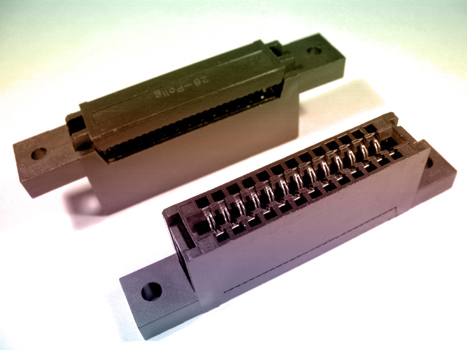
MATERIAL&FINISH
Insulator:PBT Glass Fiber(UL94V-0)
contact:Brass
Contact:Gold-Plated Over Nickel
SPECIFICATIONS
Current Rating:1A AC,DC
Voltage Rating:250V AC,DC
Temperature Range:-40℃ To+105℃
Contact Resistance:20mΩMin
Insulation Resistance:1000MΩ Min
Withstanding Voltage:500V AC/Min
Video Card Connectors,Card Slot Connectors,Card Edge Slot Connector,CF Card Connector, Edge Card Connector,Memory Card Connector,PC Card Connector,SIM Card Connector,Smart Card Connector
ShenZhen Antenk Electronics Co,Ltd , https://www.antenksocket.com